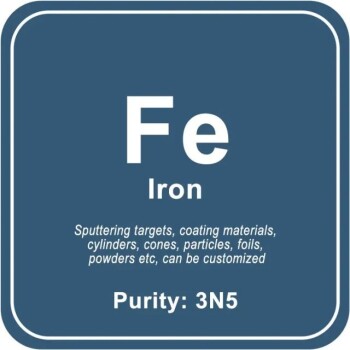Elemental analysis is a critical technique used across various scientific disciplines to determine the elemental composition of substances.
This technique is essential for research, quality control, and compliance purposes.
Traditional methods like Atomic Absorption Spectroscopy (AAS), Inductively Coupled Plasma (ICP), and X-ray Fluorescence (XRF) require specialized laboratory setups and can be costly and time-consuming.
However, advancements in technology have led to the development of portable and more accessible analyzers, enhancing the efficiency and accessibility of elemental analysis.
5 Key Points Explained: What You Need to Know About Elemental Analysis

1. Definition and Importance of Elemental Analysis
Definition: Elemental analysis involves determining the elemental composition of substances, which is crucial for various scientific fields including chemistry, environmental science, geology, and materials science.
Importance: It aids in research, quality control, and compliance, ensuring that materials meet specific standards and properties.
2. Traditional Methods of Elemental Analysis
Methods: Includes Atomic Absorption Spectroscopy (AAS), Inductively Coupled Plasma (ICP), and X-ray Fluorescence (XRF).
Challenges: These methods require specialized equipment, trained personnel, and can be expensive and time-consuming. They often necessitate sample destruction, which is not always practical.
3. Advancements in Portable Analyzers
Technological Improvements: Portable elemental analyzers have become more powerful, addressing the limitations of traditional methods. They offer quicker, non-destructive analysis with improved precision and accuracy.
User-Friendly Features: Modern portable XRF spectrometers feature intuitive interfaces and user-friendly software, making them accessible to non-expert chemical analysts.
4. Micro-Area Composition Analysis
Techniques: Includes Energy Dispersive Spectroscopy (EDS), X-ray Photoelectron Spectroscopy (XPS), X-ray Fluorescence (XRF), and Time-of-Flight Secondary Ion Mass Spectrometry (TOF-SIMS).
Applications: These techniques focus on analyzing the micro-area structure and composition within about 1 μm of the material surface depth, providing detailed insights into the elemental and chemical state of the sample.
5. Specific Techniques Explained
EDS: Commonly used with scanning electron microscopes, it analyzes elements B-U by detecting characteristic X-rays emitted from the sample when bombarded with electron beams.
XPS: Uses photoelectron emission to analyze the elemental composition, chemical state, and molecular structure of the sample surface, detecting all elements except hydrogen and helium.
XRF: Non-destructive and quick, it provides detailed information about the elemental composition of a sample, aiding in material identification and quality control.
6. Future Trends and Improvements
Enhanced Connectivity: Modern analyzers are integrating advanced connectivity features, allowing for better data management and real-time analysis.
Increased Sensitivity and Detection Limits: Technological advancements continue to improve the sensitivity and detection limits of analyzers, enabling the detection of trace elements at low concentrations.
In conclusion, elemental analysis is a vital technique that has evolved significantly with technological advancements, making it more accessible and efficient.
The development of portable analyzers and improvements in micro-area composition analysis techniques have expanded the capabilities and applications of elemental analysis in various scientific fields.
Continue exploring, consult our experts
Experience the future of elemental analysis with KINTEK SOLUTION's cutting-edge portable analyzers!
Say goodbye to the limitations of traditional methods. Our advanced XRF spectrometers offer non-destructive, precise analysis at your fingertips.
Join the ranks of scientists and researchers revolutionizing their fields. Contact KINTEK SOLUTION today to discover how our solutions can enhance your laboratory's efficiency and productivity.
Your comprehensive elemental analysis toolkit awaits – act now!











